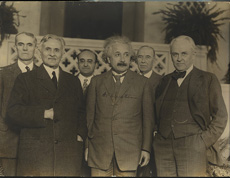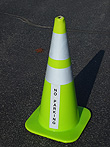|
ES&H Tips of the Week Archive |
| Subscribe | Contact Fermilab Today | Archive | Classifieds |
Every Monday, a new Safety Tip of the Week appears in
Fermilab Today, Fermilab's daily email publication for employees,
users and subscribers. Safety Tips of the Week remind employees and users
of ways to prevent injuries and illnesses. We hope that these safety tips
will encourage you to work safely all week.
ES&H Tips of the Week Archive - 2010
| Nov. 15, 2010 | ||
| Keep your Thanksgiving safe | ||

With Thanksgiving Day fast approaching, many Fermilab employees are thinking about cooking or eating turkey with family and friends. We want the holiday to be fun for all by making sure employees remember that this delicious bird can ruin the day if not prepared correctly. Salmonella bacteria from turkey can cause food poisoning, which leads to a fever, headache, vomiting, stomach pain and diarrhea.
| ||
| Nov. 8, 2010 | ||
| Preparing for the cold | ||
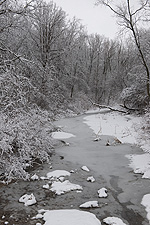
Those who live in the Chicago area take pride in enduring extreme winter weather: often a 1-2 punch of cold and windy conditions. But even veterans of Chicago chills can get knocked for a loop if they don’t remember some basic cold weather facts. Factor the wind chill into the temperature when preparing to go outside. At times unprotected skin can freeze in minutes. Surfaces farthest from your torso such as fingers, toes, ears and nose are particularly susceptible to frostbite. Once you have had frostbite, that area is more susceptible to cold exposure. Hypothermia, or a decrease in the body’s core temperature, also can occur. Everyone has an optimal temperature range where brain muscles and the heart perform best. Even prolonged cold exposure without large swings in body temperature can degrade physical and mental performance. Some military studies documented delayed response to cues before any other physical signs. So if you have a critical task to perform, it is best to attempt it while warm.
| ||
| Nov. 1, 2010 | ||
| Phished passwords an expensive catch | ||

When someone responds to a phishing e-mail and gives up a password, it costs the laboratory a lot of time and money. A multitude of people at the laboratory become involved in addressing the problem, including the incident response team, security team, Service Desk employees, the system manager and the user who gave up the password. It costs the laboratory an estimated $2,000 each time a password gets revealed to phishers. That cost does not account for the embarrassment of having the account used to spam other organizations. It also is really inconvenient for the user, and the user may lose some personal information from the e-mail messages. So why do people keep replying to phishing e-mails that ask for their passwords?
| ||
| Oct. 25, 2010 | ||
| To end problems, get to the root | ||

Have you ever pulled a weed, only to have it grow back in a week or two? The reason it came back most likely was that you failed to remove the weed’s root. Similarly, when we resolve problems at work, we need to remove the root cause of the problem to ensure that the problem does not return. An effective technique to do this is root-cause analysis, which aims to find and fix the root cause of a problem rather than simply containing the problem or repairing or replacing a defective item. Fermilab uses several root-cause methodologies tailored for specific needs. Ask your Quality Assurance Representative for guidance on using these methodologies. A basic Fermilab-wide methodology called the Fermilab Root Cause Analysis Procedure is available on the Office of Quality & Best Practices website. All Fermilab methodologies rely on the same core steps. To make sure you fix a problem so that it does not reoccur, consider these tips:
| ||
| Oct. 18, 2010 | ||
| Fermilab ahead of the curve with pest control | ||
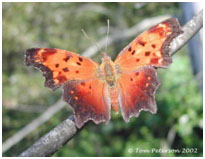
DOE’s new sustainability initiative includes a section on implementing a pest control policy. This requirement dovetails well with what Fermilab already does. Years of integrated pest management at Fermilab have resulted in the elimination or substantial reduction of pesticide use. The laboratory’s natural area restoration program is one of the most successful alternatives to massive applications of herbicides, which can be expensive as well as potentially harmful to parts of the environment. DOE wants all national laboratories to adopt similar pest management plans that represent an ecological and economical approach. The goal is to understand the ecological dimension of a given pest issue and balance that knowledge with economic and aesthetic considerations. The desired result is controlling the pest, rather than eradicating it.
| ||
| Oct. 11, 2010 | ||
| Cooler temperatures mean time to check heating sources | ||

When you’re getting ready for winter, don’t forget to add a safety review of heating sources to your checklist. These devices, including fireplaces, heaters, furnaces and back-up power systems, can cause fire deaths and carbon monoxide (CO) poisonings. Carbon monoxide is a colorless, odorless gas produced by burning materials containing carbon. It has earned the name silent killer because it ranks as the leading cause of accidental poisoning deaths in the U.S. The Centers for Disease Control estimates that carbon monoxide poisoning kills nearly 500 people and injures more than 15,000 annually.
| ||
| Oct. 04, 2010 | ||
| Bed bugs: the out-of-sight bite in the night | ||
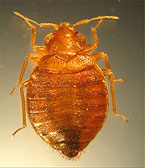
High-energy particle physics experiments occur across the United States and across the globe. The international nature of the field means that experimenters travel often for research or conferences. Jetlag used to be the main headache from frequent travel, but now travelers also have to worry about bed bugs. Complaints about the pests have risen since 1995. It is thought that years of DDT pesticide application was the main reason for the near disappearance of bedbugs around the 1950s. Subsequent to the ecologically appropriate ban on DDT, the numbers of bedbugs rose.
| ||
| Sept. 27, 2010 | ||
| Who is watching you type? | ||

When you use an ATM, you presumably are careful to make sure that no one is close behind you to watch as you type in your personal identification number. However, when using a public computer to access the Internet, the watcher who might steal your password could be hiding virtually inside the computer terminal. Hackers can install "keyboard sniffer" programs on public terminals, including those used to print airline tickets. These record every key you type. The clandestine watcher can learn your username and password by accessing the terminal after you have left. A Fermilab physicist on travel abroad recently fell into this trap. He used a public kiosk to read laboratory e-mail and do other personal business. It was later discovered that his username and password had been stored on the kiosk machine. That meant that hackers had access to his Fermilab Services Account and personal accounts until he changed his passwords.
| ||
| Sept. 20, 2010 | ||
| Defend against Murphy’s Law | ||
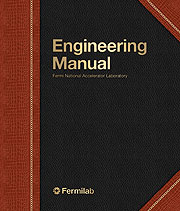
Most of us have heard of Murphy's Law. One of the first known statements of this law was in the 1940s when an instructor said, "Anything that can go wrong will, usually during the demonstration." It evolved into its current form, "Whatever can go wrong, will." You can see efforts to thwart Murphy's Law in the laboratory's recently released Engineering Manual in the sections "Engineering Design Review" and "Testing and Validation." A design review lets engineers in other disciplines check their plans for areas of potential problems. Testing and validation requirements provide checks to make sure the design works as intended.
| ||
| Aug. 30, 2010 | ||
| Fermilab seeks ways to help reduce greenhouse gases | ||
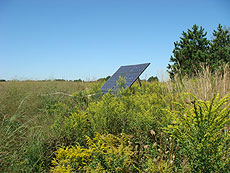
The word sustainability seems to be on everyone’s lips these days, including at Fermilab. At a fundamental level, sustainability is what allows something to endure indefinitely throughout time. On a global level, we are learning that creating more and more greenhouse gasses that can radically affect the Earth’s climate is potentially unsustainable.
Department of Energy sites have been asked by Secretary of Energy Steven Chu to find ways to sharply reduce the emissions of greenhouse gases. The request stems from a 2009 executive order that directs the federal government and its contractors to adopt more sustainable practices. DOE requires all sites to prepare site sustainability plans by the end of the year. These plans need to include greenhouse gas mitigation. Greenhouse gases include CO2, methane, some refrigerants and other industrial gasses, such as sulfur hexafluoride (SF6).
| ||
| Aug. 30, 2010 | ||
| Mosquitoes – sometimes more than an annoyance | ||

Anyone who has spent time outdoors lately has been beset by mosquitoes. Though typically we take our lumps and think no more about the insects, their bites can have serious consequences such as West Nile virus or Dengue fever. The Illinois Department of Public Health recently notified Fermilab that testers found mosquitoes trapped on the laboratory site to be infected with West Nile virus.
Though Fermilab has an aggressive mosquito-control program, mosquitoes with the virus have appeared on site every year since the department began testing in 2001.
| ||
| Aug. 23, 2010 | ||
| The dark side of file sharing | ||

Fermilab requires extremely high-speed network connections to accomplish its scientific mission. The CMS experiment alone moves data back and forth between Fermilab and CERN at speeds of up to 10 gigabits (10 billion bits) of data per second. Much of this data transfer can be characterized as file sharing, where data files originating at one site are copied to another site in order to share them with a worldwide collaboration of researchers. But there is also a dark side to such file sharing. The most obvious danger occurs when a Fermilab user downloads a file containing unknown, and possibly untrustworthy, content to a system on the Fermilab network. This presents dangers of infection similar to clicking on e-mail attachments or on web or e-mail links. In these cases, viruses or Trojan horses might tag along with what you were trying to download. Once such malicious software finds a home on a single laboratory machine, it can take advantage of the laboratory network to try to infect other machines both at the laboratory and around the world.
| ||
| Aug. 16, 2010 | ||
| The dangers of laser pointers | ||
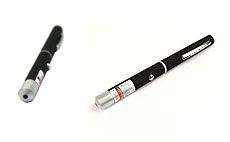
As Fermilab’s laser safety officer, I often get asked whether laser pointers are dangerous. If you use approved low-power models correctly, permanent injuries are very unlikely. However, other models can cause eye damage. The Food and Drug Administration limits laser pointer output to 5 mW. At this intensity, people are protected by an aversion response – a blink reflex faster than the 0.25 seconds it takes to produce a retinal injury. Permanent injuries from 5 mW lasers are rare and typically require intentionally staring into the beam for 10 to 60 seconds.
| ||
| Aug. 9, 2010 | ||
| Top off your fluid level to beat the heat | ||

It's summer in Chicago and that means heat and humidity are high, which can pose challenges for exercising. If you are unaccustomed to exercise in these conditions, give yourself a chance to acclimatize by building up your workout routine. It generally takes about two weeks for the body to fully adapt to warm weather. The body typically cools itself by increasing surface blood flow, or relying mainly on evaporation on a windless day. Add humidity, and our body’s air-conditioning system is severely taxed. Staying hydrated can help. Electrolyte replacement is critical for ultra-endurance events, but for most exercise, the body can catch up on losses from perspiration through a normal diet.
| ||
| Aug. 2, 2010 | ||
| Join the fight for nature | ||

The invaders are coming! No, not creatures from outer space, but non-native plants that can exploit a natural ecosystem with devastating results. These seemingly innocuous plants can render the land nearly useless to native plants and animals, ruining areas for human uses such as hunting, birdwatching and food gathering. Biodiversity can be destroyed as well. At Fermilab, the Roads and Grounds crew has been fighting the battle against invasive plants for many years. Now, with the help of a $6,000 grant from Boeing Corp. to Fermilab Natural Areas, Roads and Grounds will get reinforcements from restoration ecologist Ryan Campbell and his crew of two summer employees.
| ||
| July 26, 2010 | ||
| Choosing proper work footwear | ||
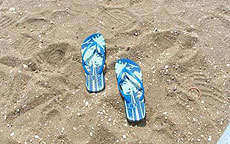
Fermilab's Medical Department has seen a large number of injuries associated with footwear choices during summer months. These injuries involved individuals wearing shoes that provide little protection or support, are hard to walk in or are ill-fitting. Here are some guidelines from the American Podiatric Medical Association to help prevent shoe-related injuries:
| ||
| July 19, 2010 | ||
| Take care to prevent clots on long airplane flights | ||

If you travel in airplanes, particularly for long periods of time, you need to consider the risks of deep-vein thrombosis, or DVT. While the Fermilab Medical Office routinely reminds those travelling abroad for business about ways to avoid the dangers of DVT, the office staff also want all employees to consider the risks when taking domestic or vacation-related flights.
The veins in your legs and thighs are a low-pressure return circuit that uses valves and muscle compression to ensure flow. Compromised blood flow increases the possibility of clotting. A clot that dislodges and travels to the heart or lungs can cause death.
| ||
| July 12, 2010 | ||
| Looking for the bad guy's needle in a data haystack | ||
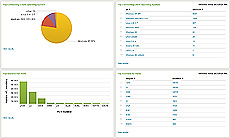
When the laboratory has a computer security incident, the incident response and computer security teams must dig through mountains of data. How do they find the little bits that lead to the tracks that the bad guy left behind? It’s a proverbial needle in a haystack. The Splunk software system can help find it.
Computer system managers give the teams the machines' log files before an incident happens. By adding those files to the Splunk software system, the teams can determine the machines' normal behavior. The teams can get a virtual picture of the existing data haystack they would need to search through in the event of trouble.
| ||
| June 28, 2010 | ||
| Same road, same rules, same rights | ||

The warm weather brings more bicyclists to Fermilab, increasing chances of collisions with motorists. To minimize this risk, Fermilab’s Traffic Safety Subcommittee plans to reach out to area bicyclists through an education and awareness campaign. The committee met Thursday with the Community Advisory Board , a collection of residents and leaders of the surrounding communities, to discuss the best ways to meet the needs of bicyclists and motorists.
| ||
| June 21, 2010 | ||
| Aspirin can help keeps hearts healthy | ||
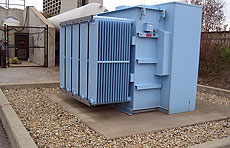
The Deepwater Horizon oil spill is the worst environmental disaster in U.S. history. How could this happen? Why weren’t the risks better understood? Why can’t they stop the leak? What can we learn from this? Questions abound but answers are elusive. Everyone can learn from this experience and take a closer look at how they assess and prepare for risks. At Fermilab, we go about our daily business of exploring the secrets of the universe and, while our answers are not 25,000 feet below sea level, there are risks to consider.
| ||
| June 14, 2010 | ||
| Aspirin can help keeps hearts healthy | ||
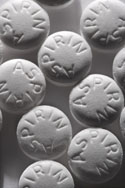
If you want to prevent heart attacks, one of the simplest things you can do is to take aspirin. Some of the most convincing evidence for aspirin’s benefit in preventing heart attacks comes from the Physician’s Health Study 1982-1995, which demonstrated a 44 percent reduction in heart attack frequency in patients who took aspirin regularly. The American Heart Association recommends the equivalent of a baby aspirin daily for prevention of a heart attack. This works to limit the number of extra platelets attracted to plaque in the blood stream, stopping the formation of dangerous clots.
| ||
| June 7, 2010 | ||
| The speed of fright | ||

When you accidentally reveal your password in a phishing attack the time it takes for the mistake to travel from the tips of your fingers and register in your brain is called the speed of fright. But too often people push down that fear and choose to believe the accident didn’t happen rather than report it to the Service Desk. Those crucial hours lost between when the keystroke happens and when the Service Desk learns of the breach can cost you dearly. | ||
| May 24, 2010 | ||
| Take action to reduce energy | ||
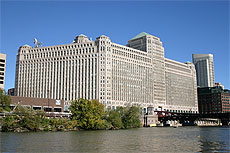
Although there is a perecent interest in finding new ways to create a more sustainable society,the role buildings play is often overlooked. In the United States alone, buildings consume more than 70 percent of electricity, use 40 percent of all energy, emit 38 percent of CO2 and consume 14 percent of water. In addition, waste generated at buildings accounts for 30 percent (136 million tons) of the total waste generated in the U.S. each year. Buildings also account for more than 40 percent of the use of raw materials. Executive orders signed by Presidents Bush and Obama require the federal government to take serious steps to reduce the amount of energy consumed in government buildings and the amount of greenhouse gasses emitted through all federal activities. Agencies need to take a hard look at long standing practices in the construction, operation and maintenance of their buildings. | ||
| May 17, 2010 | ||
| Did you hear the buzz? Yellow jacket season is here early | ||
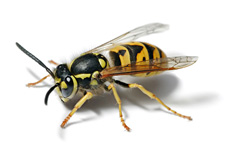
Since March three people have been stung by insects on site, signaling an early arrival of stinger season, which usually starts in July. That information, combined with the fact that the number of stings has been steadily increasing since 2002, signals that you need to stay alert. Fortunately, you can reduce the number of stings by taking a few precautions: | ||
| May 10, 2010 | ||
| Norovirus: when the odds are against you | ||
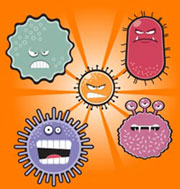
I read a headline recently along the lines of: “Casino cleans slots every 2 hours to beat Norovirus.” It is interesting to see a casino taking interest in the virus, which is behind many bouts of diarrhea and vomiting, since the virus has favorable odds. Although more prevalent in the winter, Norovirus has ruined many spring and summer vacations. This virus accounts for 66 percent of food-borne illness and infects one in 10 Americans annually. Like the common cold, it evades our immune systems by constantly changing structure. | ||
| May 03, 2010 | ||
| Beware of password phishing | ||

You may have recently received e-mails asking for your password and stating that your password has expired or that your account quota is over limit. These are scams. The Fermilab Service Desk and administrators will NEVER ask you for your password. Despite the fact that the sender name may be something like " Help Desk," these e-mails are scams. They are attempts to get you to reveal your password and other personal information, usually through an attached questionnaire. | ||
| April 26, 2010 | ||
| Keep ticks at bay with a little preparation | ||

Fermilab employees report that ticks have made their seasonal appearance at the laboratory, but with a little planning, you can still enjoy your time outside and stay healthy. The American dog tick is the largest of the Eastern wood ticks and the most common type found in Illinois. They are most active during the months of April and May. American dog ticks don’t carry Lyme disease, but they can transmit Rocky Mountain spotted fever. | ||
| April 19, 2010 | ||
| Watch out for each other: speak up for safety | ||
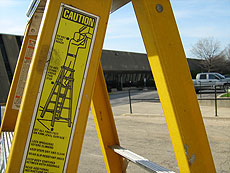
If you are walking through the laboratory and see a coworker climbing on the top of a ladder or the step just below it, warning bells should sound in your mind. The person has put him or herself in an unsafe position and could easily fall. But what should you do about it? Previous ES&H Tips have discussed the benefits of watching out for each other. But to truly avoid injuries, we must do more than just watch; we must take action. Speak up when you see a coworker engaging in risky behavior. Get involved. Don't let them learn the hard way. | ||
| April 12, 2010 | ||
| Tips for a better night’s rest | ||

Although most people do not give sleep much thought, how to get quality sleep preoccupies a minority of others. If you are one of these people, you can mitigate or eliminate many external and internal contributors to poor quality sleep once you identify them. Here are some common tips to improve your sleep hygiene, what sleep specialists call the habits that contribute to a healthy, restful sleep. | ||
| April 05, 2010 | ||
| It’s tax time; do you know where your PII is? | ||

Fermilab is responsible for managing particular types of personally identifiable information, or PII, on behalf of its employees and users. For example, the laboratory needs to know employees’ Social Security numbers in order to properly report their incomes to the IRS. The laboratory takes special measures to protect this information. Everyone at Fermilab is responsible for completing training to ensure he or she understands how to recognize laboratory-managed personally identifiable information. Those who handle laboratory-managed PII must take additional training. Computers that store PII have extra security requirements. Because our work lives often blend into our private lives, it’s easy to be careless about where we store personal information. If you store your personal PII on your computer at work, the laboratory is not responsible for protecting it. Your desktop or laptop is not configured with the security controls that provide the kind of protection you probably want for information such as your Social Security number or personal financial information. Someone could use this information to steal your identity. If you keep anything related to your tax return on your computer, it is likely to contain PII that you would not want cyber thieves to find. | ||
| March 29, 2010 | ||
| Be prepared for severe weather | ||
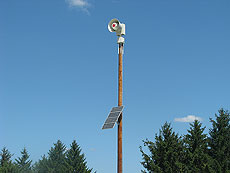
As the warmer months approach, make sure you are prepared for severe weather such as tornadoes, thunderstorms, lightning, flooding, high winds and large hail. In order to be prepared, you need to recognize that a hazardous condition exists and then take the appropriate steps to protect yourself. Fermilab issues weather watches and warnings via the Site-wide Emergency Warning System that consists of outdoor sirens and indoor alarms. If you are outside when sirens activate, you should proceed to the nearest available shelter. If there is insufficient time, you should lie in a ditch or crouch near a sturdy structure. If you are indoors when the alarm sounds, just follow the verbal instructions that are provided after the tone. Even if no warning has been issued, use common sense when severe weather is imminent and keep your eyes on the sky. Move to the safest location possible until the threat has passed. Designated shelters and lower, windowless rooms are best. | ||
| March 22, 2010 | ||
| Don’t share your home wireless | ||

A friend recently told me that his wife mentioned that their next-door neighbor frequently sat in a lawn chair with his laptop near the fence near their house. She thought it was kind of creepy. It dawned on my friend that the neighbor was probably using his wireless connection. This turned out to be true. The reach of the wireless router in your house often extends beyond your lot line. That means that in a typical suburban neighborhood, four to five houses can easily sit close enough to your home to be within range of your home wireless signal. | ||
| March 15, 2010 | ||
| Why coyotes are your friends | ||
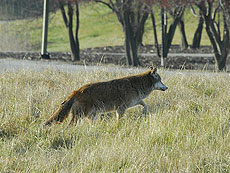
During the last decade, encounters between coyotes and humans have been on the rise due to increases in both populations. At Fermilab you can see coyotes trotting down bike trails and occasionally entering parking lots. This is nothing to fear; coyotes are an essential part of keeping balance on the Fermilab site. Stories abound of coyotes challenging people, killing small pets and terrorizing children. However, Illinois has not had a single reported case of a coyote attack on a human in 30 years. Attacks on small pets also rarely occur. A recent study in Cook County showed that cat remains were found in only 2 percent of coyote droppings analyzed. A study of the Fermilab coyote population done in 1994 showed that coyotes consume small rodents -- mostly voles -- almost exclusively. Since then goose eggs also have become a diet staple. | ||
| March 08, 2010 | ||
| Three days out and you’re in - the doctor’s office | ||

In baseball, the number three usually means you’re out, but at Fermilab that means it’s time to check in with the Medical Office. Often those with busy schedules or office-based work believe there is no need to check in after missing 24 hours of work time, or three days. Aside from the fact that it is personnel policy, there are some added potential benefits for the employee and the laboratory. Even if you do your work on a computer, your medical conditions can have implications for your work at Fermilab. A visit to the Medical Office can help arrange temporary handicap parking, an alternate plan for fire or tornado drills and even tweaks to your workspace to better accommodate your new challenges. | ||
| March 01, 2010 | ||
| Looking out for wildlife | ||

Sorting out all the direct and indirect effects of global warming can be a challenge. Nowhere is this more evident than the area of biodiversity. The reason for this is pretty clear – throw a couple of thousand species of plants, insects, mammals and birds together in an ecosystem regulated by natural laws and, voila, too many variables. But one thing that is clear is the need for wildlife to have protected natural areas such as Fermilab that offer safe places to nest year round or to rest during migration periods. | ||
| Feb. 22, 2010 | ||
| Get the inside scoop on product recalls | ||
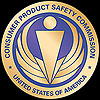
In light of the recent spate of Toyota recalls, you may be wondering how to know if the products you use are safe. ES&H can help. The ES&H section receives regular postings from the Consumer Product Safety Commission warning of recalls on consumer products. These recalls have to do with just about everything people buy, including consumer electronics, home and garden products, baby furniture and home equipment . ES&H gets these recalls before radio and TV stations, which typically only announce the most serious product risks. | ||
| Feb. 15, 2010 | ||
| Phishers capitalizing on Toyota recall | ||

We replaced my wife’s SUV with a new Toyota minivan a few weeks ago. We removed all the seats and replaced them with dog kennels, dog beds, a booster seat for the little dog and platforms for the others. Conversion to a mobile dog kennel got rid of that new car smell quick. We lost that new car thrill even quicker during the next few days as the largest recall of Toyotas in history unfolded. Timing is everything. | ||
| Feb. 08, 2010 | ||
| Resistance exercise yields many benefits | ||
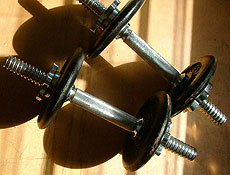
Resistance training (RT) is the term used to describe what most people think of as weight training. It can offer you benefits for your personal and work life. A RT program yields maximum benefits when it is superimposed on an aerobic exercise program. Minimally you should stretch and exercise the big muscle groups of the upper and lower body such as the chest, shoulder, upper-arm region, lower back, abdomen and thighs. If you are new to this type of exercise, start with resistance exercises that allow you to perform 10-15 repetitions. If you have any heart or lung problems, uncontrolled high-blood pressure, joint instability or reservations, touch base with your doctor before beginning a program. | ||
| Feb. 01, 2010 | ||
| Happy 40th anniversary, NEPA | ||
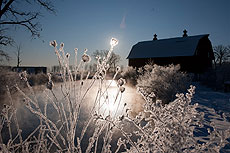
At the end of 1969, the National Environmental Policy Act (NEPA) – the first major environmental law in the United States — passed Congress with nearly unanimous bi-partisan support. NEPA was then signed into law on Jan. 1, 1970, ushering in the environmental-law decade of the 1970s. NEPA set forth environmental protection and conservation as a U.S. policy, and ensures the public has an opportunity to participate in environmental decision making. It established a framework to ensure that environmental factors, along with economic and technical factors, receive appropriate consideration. That means the assessments for all experiments and projects include calculations of their impacts on air, sound, water, soil and traffic flow as well as looking at ways to minimize these impacts. | ||
| Jan. 25, 2010 | ||
| Clear snow from vehicles | ||
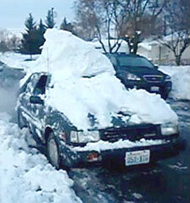
Nearly everyone has done it: You clear just enough snow and ice from a car windshield to see out and then drive off, hoping the defrosters, wipers and motion of the vehicle will remove the rest of the snow. This is dangerous not only for so-called "peephole drivers," but it also puts pedestrians and other drivers at risk of being hit by chunks of snow and ice that can dislodge without warning. | ||
| Jan. 11, 2010 | ||
| Medical test changes require more notification at work | ||
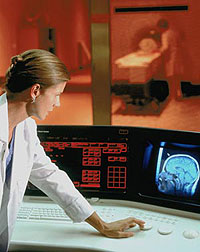
With an aging workforce, the Medical Office sees more people getting medical scans that use radioisotopes. Many people incorrectly think that these off-hour procedures won’t affect their work life. The United States received a large portion of its medical isotopes from Canada’s Chalk River Reactor. When that facility shut down in May, it created a national shortage of the most common short-lived radioisotope used in medical tests, Technetium 99m. As a result, many doctors have reverted to using, at least in part, the former test radioisotope Thallium 201, which has a longer life span in the body. That change makes the typical time period between the scan and wearing a dosimeter inadequate. | ||
| Jan. 04, 2010 | ||
| What to do with all the spam | ||

Inheritance claim. Discounted drugs. Notice of account activity. Internet spammers use a variety of disguised subject lines to convince people to open their messages. When you receive unsolicited bulk e-mail, or spam, you should report it using Fermilab’s online reporting tool. | ||
Safety Tip of the Week - Current Archive
2014 Safety Tip of the Week Archive
2013 Safety Tip of the Week Archive
2012 Safety Tip of the Week Archive
2011 Safety Tip of the Week Archive
2010 Safety Tip of the Week Archive
2009 Safety Tip of the Week Archive
2008 Safety Tip of the Week Archive
2007 Safety Tip of the Week Archive
2006 Safety Tip of the Week Archive
2005 Safety Tip of the Week Archive
2004 Safety Tip of the Week Archive
Return to Current Fermilab Today

